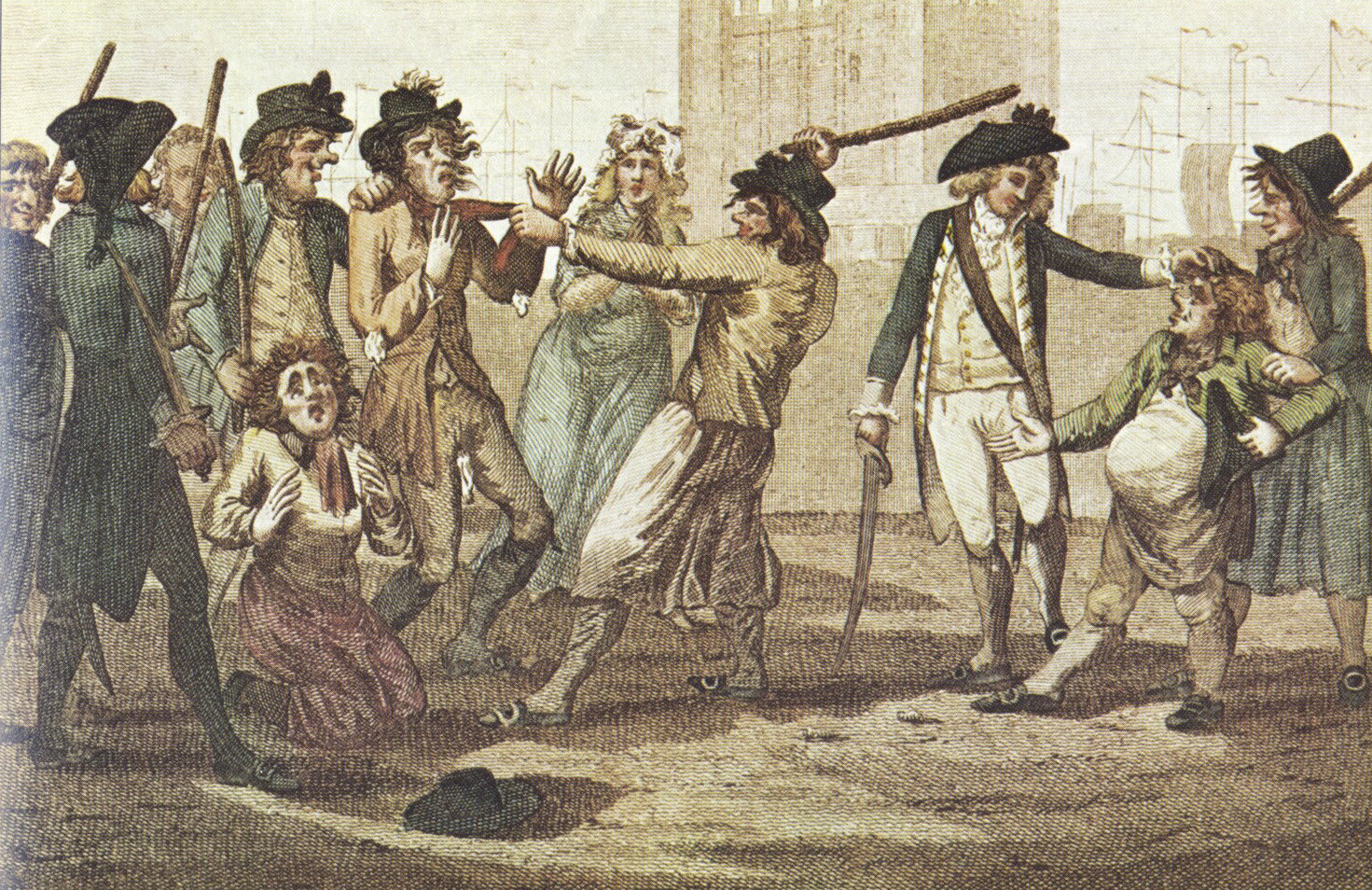Difference between revisions of "Conscription"
| Line 1: | Line 1: | ||
| − | [[File:Caricature-1780-press_gang.jpg|thumb|Depiction of a Royal Navy [[press gang]], 1780.]] |
+ | [[File:Caricature-1780-press_gang.jpg|thumb|Depiction of a [[Royal Navy]] [[press gang]], 1780.]] |
[[Conscription]] (also called the draft in the United States) is the state-mandated enlistment of people in a national service, mainly a military service. With few exceptions conscription applies exclusively to men. |
[[Conscription]] (also called the draft in the United States) is the state-mandated enlistment of people in a national service, mainly a military service. With few exceptions conscription applies exclusively to men. |
||
Revision as of 03:47, 23 January 2024
Conscription (also called the draft in the United States) is the state-mandated enlistment of people in a national service, mainly a military service. With few exceptions conscription applies exclusively to men.
Conscription dates back to antiquity and it continues in some countries to the present day under various names. The modern system of near-universal national conscription for young men dates to the French Revolution in the 1790s, where it became the basis of a very large and powerful military. Most European nations later copied the system in peacetime, so that men at a certain age would serve 1–8 years on active duty and then transfer to the reserve force.
Conscription is controversial for a range of reasons, including conscientious objection to military engagements on religious or philosophical grounds; political objection, for example to service for a disliked government or unpopular war; sexism, in that historically men have been subject to the draft in the most cases; and ideological objection, for example, to a perceived violation of individual rights. Those conscripted may evade service, sometimes by leaving the country,[2] and seeking asylum in another country. Some selection systems accommodate these attitudes by providing alternative service outside combat-operations roles or even outside the military, such as Siviilipalvelus (alternative civil service) in Finland, Zivildienst (compulsory community service) in Austria, Germany and Switzerland. Several countries conscript male soldiers not only for armed forces, but also for paramilitary agencies, which are dedicated to police-like domestic only service like internal troops, border guards or non-combat rescue duties like civil defence.
As of 2022, many states no longer conscript soldiers, relying instead upon professional militaries with volunteers. The ability to rely on such an arrangement, however, presupposes some degree of predictability with regard to both war-fighting requirements and the scope of hostilities. Many states that have abolished conscription still, therefore, reserve the power to resume conscription during wartime or times of crisis.[3] States involved in wars or interstate rivalries are most likely to implement conscription, and democracies are less likely than autocracies to implement conscription.[4] With a few exceptions, such as Singapore and Egypt, former British colonies are less likely to have conscription, as they are influenced by British anti-conscription norms that can be traced back to the English Civil War; the United Kingdom abolished conscription in 1960.[4]
| Country | Men | Women | ||
|---|---|---|---|---|
| Age Range | Duration | Age Range | Duration | |
See Also
External Links
References
Wikipedia
This article contains information imported from the English Wikipedia. In most cases the page history will have details. If you need information on the importation and have difficulty obtaining it please contact the site administrators.
Wikipedia shows a strong woke bias. Text copied over from Wikipedia can be corrected and improved.
